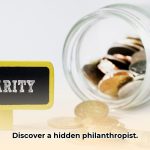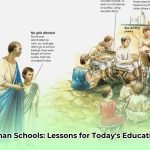Have you ever heard of Elizabeth Mary Wilhelmina Bentinck? If not, you’re in for a treat. More than just a person with a notable lineage, she redefined modern philanthropy by leveraging her influence and resources to drive global change. Her groundbreaking work in environmental protection, education, and women’s rights showcases how she revolutionized her family’s legacy into impactful action. This story uncovers Bentinck’s unique approach to tackling challenges and highlights how her story can inspire future generations. Prepare to be inspired by a woman who proved that privilege can indeed be a powerful tool for positive change.
Who is Elizabeth Mary Wilhelmina Bentinck? Understanding Noble Contributions
Elizabeth Mary Wilhelmina Bentinck’s story demonstrates a modern approach to philanthropy, demonstrating quiet impact and redefining what it means to be an engaged benefactor. Her legacy extends beyond inherited wealth, showcasing how privilege can be used to reshape the world. Let’s explore her dedication to environmental conservation and her work in promoting equitable education worldwide.
A Life Bridging Cultures, Embracing Global Citizenship
Bentinck’s early life was a blend of cultures and languages, growing up in a family with international connections. This upbringing nurtured a worldly perspective that transcended national borders, which significantly shaped her commitment to global initiatives. Her childhood, steeped in diverse perspectives and multilingualism, served as a foundation for her future work, fostering cultural understanding and a keen awareness of global issues. The bicultural background undeniably influenced her philanthropic endeavors, casting a long shadow on her dedication.
Philanthropy in Action: More Than Just Money, Dedicated Social Change
Bentinck’s philanthropy went beyond monetary donations, reflecting her deep, personal dedication to causes close to her heart. She actively participated and championed her beliefs, supporting education by working directly with institutions to improve access for underprivileged students. She also demonstrated her values through action by actively managing her own sustainable estates. Her commitment to women’s empowerment involved collaborating with grassroots organizations, providing financial and strategic assistance. These sustained efforts demonstrate her philanthropic leadership, extending beyond simple financial contributions to create lasting social change.
Stories highlighting her engagement paint a vivid picture of her contributions. For example, a story of her personally mentoring a young woman pursuing a career in science, or working alongside volunteers to restore a threatened ecosystem, brings a human dimension to her efforts.
Reinventing “Noblesse Oblige”: A Modern Approach to Social Responsibility
Bentinck’s life embodies a fresh interpretation of “noblesse oblige,” the principle that those born into privilege have a moral obligation to serve. Instead of passively fulfilling societal expectations, she actively sought opportunities to use her resources in meaningful ways, leveraging inherited wealth as a catalyst for social change. Her approach redefined philanthropic work, setting a new standard for impactful giving.
Her proactive approach contrasts previous generations of wealthy philanthropists, marking a revolutionary stance. Further research could illuminate the context of her efforts within the societal and philanthropic norms of her time.
Facing Challenges, Charting a Course for the Future: Impactful Giving
Despite the influence of Bentinck’s work, challenges persist. The lack of readily available, detailed data makes it difficult to quantitatively assess the full extent of her success. Despite these limitations, analyzing her strategies, identifying strengths and weaknesses, and considering how her model might be improved and adapted for future initiatives can yield valuable insights.
The following table summarizes potential challenges and opportunities:
| Stakeholder Group | Challenges | Opportunities |
|---|---|---|
| Bentinck Family/Estates | Measuring the long-term environmental impact of sustainable practices on the estates. Balancing the need for conservation with economic viability. | Developing sustainable tourism models that preserve the environment and generate income for conservation efforts. |
| Partner Organizations | Securing consistent funding. Expanding the reach of initiatives to underserved communities. Coordinating efforts to avoid duplication and maximize impact. | Developing collaborative projects to share resources and expertise, leading to greater efficiency and impact. |
| Educational Institutions | Expanding scholarship programs to increase access for students from diverse backgrounds. Ensuring programs achieve their goals. Addressing systemic inequalities in education. | Creating global exchange programs to foster cross-cultural understanding among students. |
| Women’s Empowerment Groups | Measuring the long-term impact on women’s lives. Overcoming systemic barriers that hinder progress. Ensuring programs are culturally sensitive and relevant. | Developing comprehensive leadership training programs that equip women with the skills and resources to become effective change agents. |
| Environmental NGOs | Scaling up conservation efforts while maintaining ecological integrity. Securing necessary funding and resources. Engaging local communities in conservation efforts. | Forging international collaborations on environmental projects to tackle global challenges. |
| Researchers/Historians | Gathering sufficient quantifiable data on Bentinck’s philanthropic work for a comprehensive and objective evaluation. Accessing historical records and personal accounts. Ensuring data privacy and ethical research practices. | Creating case studies that demonstrate the effectiveness of modern philanthropy and inspire future generations. |
The path forward requires transparency, data-driven approaches, and sustained collaboration. While the exact details of Bentinck’s impact may remain partially veiled, the principles guiding her work—dedication, active participation, and a reimagining of responsibility—remain invaluable lessons. Her story offers a roadmap for the future of engaged philanthropy.
How to Measure the Impact of Elizabeth Bentinck’s Sustainable Philanthropy: Evaluating Efforts
Key Takeaways:
- Elizabeth Bentinck redefined “noblesse oblige,” blending her aristocratic background with modern social responsibility.
- Her impact spans education, environmental protection, and women’s empowerment.
- Measuring her impact directly is challenging, but qualitative data offers valuable insight.
- Future research should focus on developing more robust metrics to capture the full scope of her contributions.
- Her legacy inspires future generations to consider innovative approaches to sustainable and impactful giving.
Early Life and Influences: Shaping a Visionary
Elizabeth Mary Wilhelmina Bentinck’s upbringing shaped her worldview. Her bicultural background and multilingual fluency fostered a global perspective, influencing her philanthropic endeavors. This early exposure instilled a deep empathy for others and a commitment to social change. She understood the responsibility that came with privilege.
Philanthropic Endeavors: A Multifaceted Approach to Change
Bentinck’s philanthropy was a tapestry of interwoven commitments. She championed education, recognizing its transformative power. Environmental conservation was another key focus, reflecting her appreciation for nature. Simultaneously, she advocated for women’s empowerment, believing in their potential and the impact of gender equality.
How to Measure the Impact of Elizabeth Bentinck’s Sustainable Philanthropy: The Challenges of Quantification and Qualitative Insights
Quantifying Bentinck’s impact presents a challenge, as traditional metrics fall short. Her influence extended beyond financial contributions. How do you assign a numerical value to improved literacy rates or to the preservation of a natural habitat? What alternative methods can accurately reveal the effectiveness of her programs?
A nuanced approach is needed. Collecting qualitative data such as testimonials, analyzing educational program outcomes, and documenting environmental preservation efforts provides a measure of her legacy.
Such narrative evidence reveals the scale and significance of her actions, showcasing the ripple effects of her generosity. Observe the river’s current to understand its magnitude.
- Unveiling ancient roman busts: Values, history, & decor tips. - August 18, 2025
- Unlock Ancient Glamour: Roman Hairstyles, a Recreation Guide for Today’s Style Icons - August 18, 2025
- Rome’s Visual Legacy: Finding Authentic Ancient Rome Images and Pictures Today - August 18, 2025













2 thoughts on “Discover Elizabeth Mary Wilhelmina Bentinck: A Modern Philanthropist’s Impact”
Comments are closed.